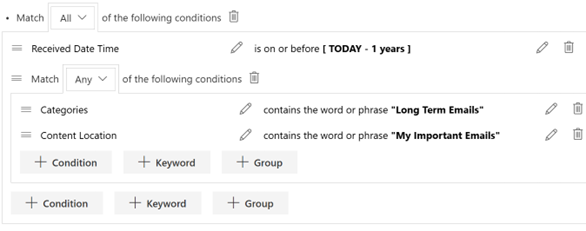
Implementing or upgrading an RM system for your organization? Here are ten common organizational pitfalls we've seen that are best avoided, and our recommended alternatives!
1. Biting Off More Than You Can Chew
Trying to roll out a new program software across an entire organization right off the bat is not recommended because software implemented organization-wide needs to be more generic to accommodate and is less likely to appeal to certain departments, resulting in lower user adoption rates.
*Our recommendation* Using a pilot group or user focus group can allow solution developers to configure a more detailed and targeted solution.
2. User Acceptance Is Not Top Priority
While aspects such as long-term company vision and software architecture are important, it is key to prioritize user acceptance. Focusing elsewhere runs the risk of bugs, functionalities not on par, and overall likelihood of lower adoption by users who have not been acknowledged in the process.
*Our recommendation* The team should talk to users so they build something users want. With proper discourse and acceptance testing, implementers can ensure end users' business needs are fully met.

3. Auto-categorization Is Not Priority
If there is lack of automation in the software that your organization chooses to implement, more time and frustration will likely go into navigating and manually categorizing.
*Our recommendation* It is important to go with an RM software solution that focuses on automating end-user tasks in order to drive classification accuracy and user adoption.
4. Lacking Mandate For Implementation
One of the biggest pitfalls when implementing a new program would be if the top-level executives are not informed or have not approved. Lacking authority to run a project could result in a number of authorization and communication issues at any point of the process.
*Our recommendation* The best RM programs have been given clear mandate from the highest level in their organization, so ensuring that top-level executives are briefed and have shared importance to the rest of personnel is ideal.

5. Insufficient Communication About Program Importance
Expanding on the last point, if the objective is implementing a program for departments other than Records Management, then all those departments should understand why this implementation is important. Without communication clearly outlining significance and guidelines of the program, there can be confusion or lack of knowledge that results in lower user adoption rates.
*Our recommendation* Communication really is key! Ensure that the RM program has been effectively communicated throughout the organization, including training and onboarding practices to inform new hires.
6. Too Much Friction For End Users
The work day is busy enough without implementation of an RM program that requires end users to spend a lot of time learning navigation and functionalities. With complex software, time is wasted and both end users and the IT department are left frustrated.
*Our recommendation* Ensure that your organization selects an RM software that integrates so seamlessly with users' day-to-day that they do not notice they are part of an RM program. This way, user adoption rates are likely to be higher.

7. The Program Has Not Been Endorsed
If the system being implemented or upgraded has not been vetted by appropriate personnel, there is risk that it will not match your organization's current business needs.
*Our recommendation* It is necessary to ensure that the RM program you're implementing has been fully endorsed, including having vetted records classification and retention schedules.
8. Difficult To Search Or Access Content
The RM software that your organization selects should not make content discovery a complex experience. This would be another avenue for wasted time.
*Our recommendation* Select a program for your organization where content and information are discoverable in all areas for the most efficiency. Easy searchability and access also enables content to be more readily applied to necessary business processes, rather than sitting idle.
9. Skipping The Audits
Has the RM program been successfully implemented? Is it being used to its greatest potential? How are end user adoption rates? Without periodic audits, your organization will not be able to answer these questions or make improvements.
*Our recommendation* Preform regular audits for compliance with the RM program you've put into place. Investigate if personnel are following the RM program. If not, explore why and what can be done to get everything on course.
10. Taking A ‘Vendor-Does-Everything' Approach
Expecting a vendor to simply come in, take care of everything and then leave can result in a solution that is one-size-fits-all, does not connect with end users, is not embraced by the organization and has poor adoption rates.
*Our recommendation* Allocating the organizational resources and personnel necessary to work alongside the vendors in partnership throughout implementation or upgrading allows your organization to be more involved, knowledgeable, and better equipped.
By avoiding these top ten common pitfalls, your organization is more likely to implement a Records Management program that truly optimizes business processes, improves worker productivity, and reaps ROI benefits. Learn more about by checking out our blog for RM-related articles such as the Importance of Record Classification. To find out how Collabware provides both products and services to ensure the optimal RM program implementation and experience, contact us for a personalized discovery call or a free demo today.
For a free printable version of this list and a (bonus!) RM health status checklist, download our PDF below.
![]()





